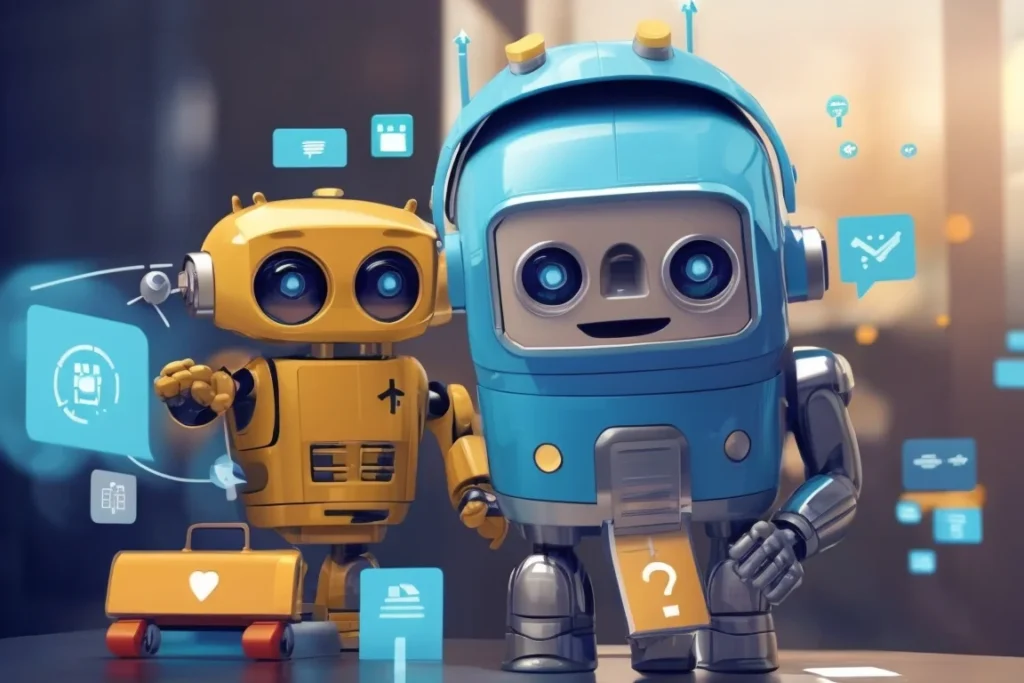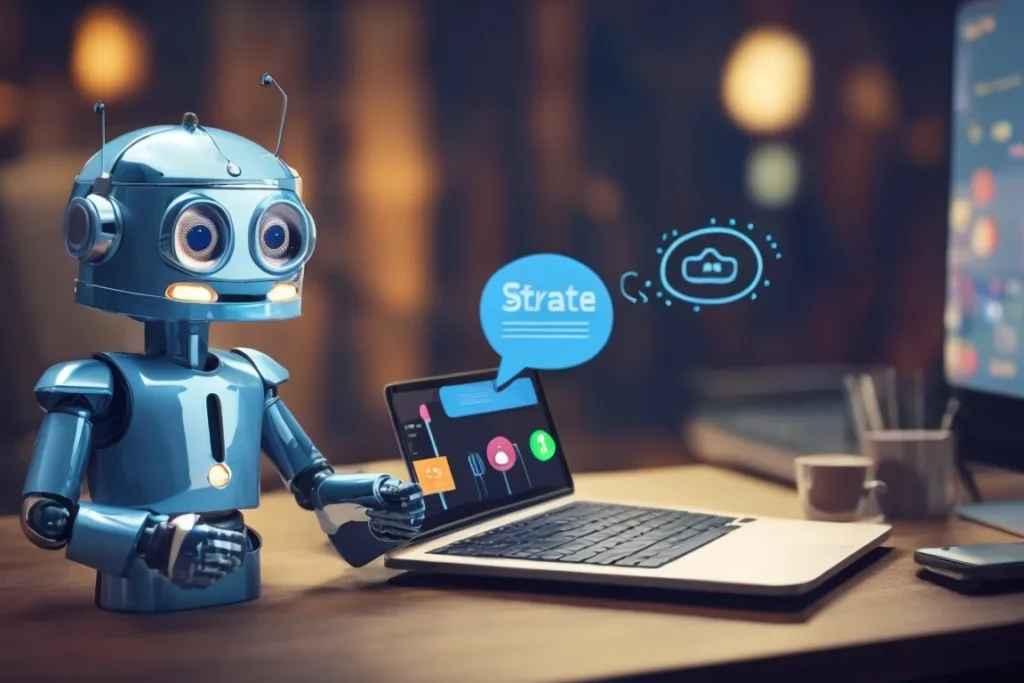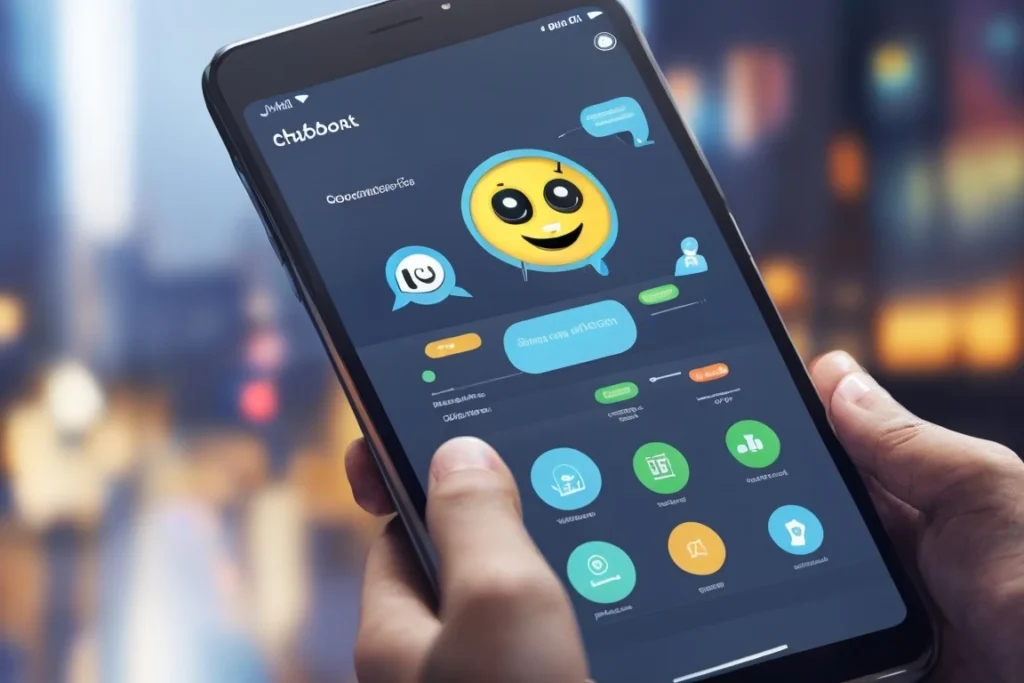Chatbots are now vital for marketing automation and AI strategies. With natural language processing, chatbots can simulate human conversations. This lets businesses engage with customers in new ways by providing fast, personalized interactions at scale.
Chatbots enable 24/7 customer engagement with instant, personalized experiences at an unprecedented scale. By automating conversations using natural language processing, they qualify leads, surface insights, and optimize the buyer’s journey cost-effectively.
In this post, we’ll explore how chatbots are strategic tools that allow marketers to automate conversations, qualify leads, and gather data – all while delighting customers. With the right chatbot strategy, businesses can boost efficiency, reduce costs, and gain actionable insights into buyer behavior. Read on to learn why chatbots are a game changer for integrating marketing automation and AI.
Understanding Chatbots
What are chatbots?
Chatbots are AI-powered programs designed to interact with users in a human-like conversation. They can be integrated into websites, social media platforms, or messaging apps, offering instant responses and assistance.
Benefits of chatbots
Chatbots bring several benefits to the table. They operate 24/7, providing round-the-clock customer support, and they can handle multiple queries simultaneously, improving efficiency. Furthermore, they collect valuable data on customer interactions, which can be harnessed for marketing insights.
Businesses that embrace chatbots as core components of their marketing automation tech stack will gain a strategic advantage in connecting with customers in a highly personalized, automated manner.
Chatbots Streamline Conversations and Automate Engagement

One of the biggest benefits of chatbots for marketing automation is their ability to automate repetitive conversation tasks. With preset scripts and dialog flows, chatbots can handle frequently asked customer queries on demand 24/7.
For example, a chatbot on a brand’s website can automate conversations to:
- Answer common questions about products, services, shipping times, returns, etc. This allows human agents to focus on more complex issues.
- Provide account assistance by looking up order status, transaction history, loyalty program details, etc.
- Guide customers to relevant pages or products based on their queries. The chatbot can ask probing questions to understand the intent and then point users to appropriate landing pages or items.
- Collect information from users through surveys, feedback forms, or account sign-up processes. Chatbots excel at gathering data through conversational interactions.
These automated engagements allow businesses to respond to customers instantly whenever they need assistance. Chatbots scale conversations by handling thousands of inquiries without wait times or human oversight. This drives significant operational efficiencies while also boosting customer satisfaction.
With AI and NLP advancing rapidly, chatbots are becoming incredibly adept at understanding natural language, engaging in two-way dialogue, and providing personalized recommendations. This creates more human-like conversational experiences that delight customers.
AI Art vs Human Art: Exploring the Great Debate
Chatbots Qualify and Route Leads Effortlessly
Another way chatbots turbocharge marketing automation is through their ability to qualify and route leads automatically through conversational questionnaires.
Typically, brandsChatbot static lead capture forms on their website or landing pages. However, these extract minimal information and do not engage site visitors. In contrast, chatbots can initiate interactive dialogues to engage prospects and ask smart questions to determine their needs.
Based on the prospect’s responses, the chatbot can instantly route them to the right sales rep, campaign, or nurture track. For example:
- A chatbot on a landing page can ask visitors questions about their role, company size, challenges they face, etc. to classify them as marketing-qualified leads (MQL) or sales-qualified leads (SQL).
- It can then sync this lead intelligence with CRM in real-time and notify sales teams to initiate outreach.
- The chatbot can also automatically trigger personalized email or text nurture campaigns based on the prospect’s profile.
This level of instant lead qualification and routing is not possible with traditional web forms. Chatbots start meaningful conversations that provide fuller context to route prospects appropriately.
As the chatbot continues conversing with leads across channels, it can update its lead score and send real-time alerts to sales teams on who is sales-ready. This reduces lead leakage, boosts conversions, and ensures highly relevant targeting.
Chatbots Extract Crucial Insights from Customer Conversations

While engaging and qualifying customers, chatbots also extract pivotal conversational data that provides deep insights into customer behavior, pain points, and motivations.
Using NLP and machine learning, chatbots analyze natural conversations to uncover trends and patterns across thousands of customer interactions. This powers data-driven marketing decisions to enhance personalization, targeting, and strategy.
Key insights chatbots reveal include:
- Identifying Most Discussed Topics: Chatbots gather data on the most frequently asked questions or discussed topics across customer conversations. These highlight top-of-mind concerns businesses need to prioritize addressing through messaging, content, or product changes.
- Pinpointing Pain Points: By using sentiment analysis, chatbots identify customer pain points highlighted through complaints, frustrations, or difficulties. Businesses can then proactively resolve these pain points.
- Determining True Interests: Chatbots that have flowing dialogue (rather than scripted responses) can gauge customer interests based on the conversations customers steer organically. This reveals true needs.
- Creating Detailed Buyer Personas: Chatbot conversations provide behavioral data to flesh out detailed personas with insights that can inform precise targeting and personalization.
- Optimizing Sales Funnels: Chatbots can identify where most users drop off in sales funnels and diagnose why through analysis of chat transcripts. This allows optimization of bottlenecks.
- Improving CX: Customer feedback shared with chatbots provides invaluable data to improve messaging, CX, and products/services. Sentiment analysis also lets brands gauge satisfaction levels.
- Understanding Intent: By tracking how customers describe what they are looking for, chatbots can decode purchase signals and map journeys from interest to intent to purchase.
- Generating Competitive Intelligence: Customers may mention competitor names or discuss switching in conversations. This competitive intelligence can fuel business decisions.
- Driving Product Innovation: Feedback on desired features or pain points with existing products shapes potential new offerings.
- Personalizing Recommendations: As chatbots interact with customers, they gain data to make highly tailored product/content recommendations driven by personal interests.
By unlocking the power of natural conversation data, chatbots deliver some of the most impactful business insights to drive ROI. The competitive advantage for brands is undeniable.
Best Practices for Adopting Chatbots
To recap, chatbots are invaluable for marketing automation in the following ways:
- Automating conversations to increase efficiency
- Qualifying and routing leads faster
- Extracting data-driven insights from dialogues
Here are the best practices brands should follow to maximize value:
- Outline clear objectives you want your chatbot to achieve before investing. This focuses efforts.
- Integrate your chatbot with marketing automation and CRM systems using APIs for seamless data sharing.
- Build natural language conversational ability leveraging AI to engage customers. Avoid rigid scripts.
- Launch your chatbot across key customer touchpoints like your website, apps, messaging platforms, etc.
- Promote the availability of your chatbot across channels to drive adoption.
- Analyze chatbot metrics regularly around leads captured, sales influenced, sentiment, conversation topics trends, etc. Optimize based on insights.
- Keep training your chatbot with more conversational data continuously to make interactions more intelligent over time.
- Have a human takeover plan for conversations the chatbot cannot handle yet. Hybrid bots are ideal.
Measuring the Success of Chatbots

Measuring the success of your chatbot is crucial to understanding its impact on your marketing strategy. Here are some key performance indicators (KPIs) to track:
Key Performance Indicators:
1. Response Time: The time it takes for your chatbot to respond to user inquiries is a critical metric. Faster response times lead to higher user satisfaction.
2. User Satisfaction: Collect feedback from users to gauge their satisfaction with the chatbot’s interactions. High user satisfaction is a sign of a successful chatbot.
3. Conversion Rates: Monitor how chatbot interactions impact conversion rates. For example, track how many leads generated by the chatbot eventually make a purchase.
4. Issues Resolved Without Human Intervention: One of the primary goals of a chatbot is to resolve user inquiries without human intervention. The percentage of issues resolved by the chatbot indicates its effectiveness.
How to Continuously Improve:
To ensure the ongoing success of your chatbot, consider the following strategies:
- Regular Data Analysis: Analyze user interactions and feedback to identify areas where the chatbot can be improved. Look for patterns and common issues.
- A/B Testing: Conduct A/B testing to optimize conversations and ensure a positive user experience. Test different responses and flows to determine what works best for your audience.
- Integration with Marketing Automation: As mentioned earlier, chatbots can seamlessly integrate with marketing automation systems. This integration enables real-time decision-making and improved campaign performance.
Case Studies: Chatbots in Action
A. Starbucks – Personalized Recommendations
Starbucks, the renowned coffee chain, uses a chatbot on its mobile app. The chatbot provides personalized drink recommendations based on user preferences and order history, creating a highly engaging and tailored experience.
B. Sephora – Virtual Beauty Advisor
Sephora, a leading cosmetics retailer, employs a chatbot to help customers find the perfect beauty products. Users can interact with the chatbot to get personalized product suggestions and makeup tips, replicating the in-store experience online.
C. H&M – Chatbot Fashion Stylist
H&M’s chatbot acts as a virtual stylist, helping customers discover and purchase fashion items. By asking questions about style preferences, the chatbot provides personalized clothing recommendations, making online shopping more enjoyable and efficient.
The Future of Chatbots in Marketing

The evolution of chatbots is far from over. As AI advances, chatbots will become even more sophisticated. Potential future capabilities include:
Hyper-Personalization: Chatbots will provide hyper-personalized experiences by understanding user emotions, and preferences and anticipating needs to proactively offer solutions.. They’ll anticipate customer needs and proactively offer solutions.
Multichannel Integration: Chatbots will seamlessly operate across multiple channels, ensuring a consistent user experience. Whether it’s a website, social media, email, or voice assistant, chatbots will be omnipresent.
Enhanced Customer Insights: Advanced chatbots will provide more profound insights into customer behavior and preferences. This data will inform marketing strategies, product development, and overall business decisions.
Advanced Conversational Abilities: Future chatbots will have more sophisticated conversational abilities, understand context, and engage in more natural and human-like interactions. They’ll be virtually indistinguishable from human customer support agents.
Conclusion:
Chatbots are powering the next evolution of marketing automation with their ability to have natural conversations that engage customers and extract actionable insights. By deploying chatbots across channels, brands can drive more qualified leads, higher CSAT, and richer customer data to inform strategy. With the right strategy and integrations, chatbots enable highly personalized, automated engagements that ultimately fuel business growth. This is why chatbots are becoming must-have tools for forward-looking marketers focused on long-term success.
One Response